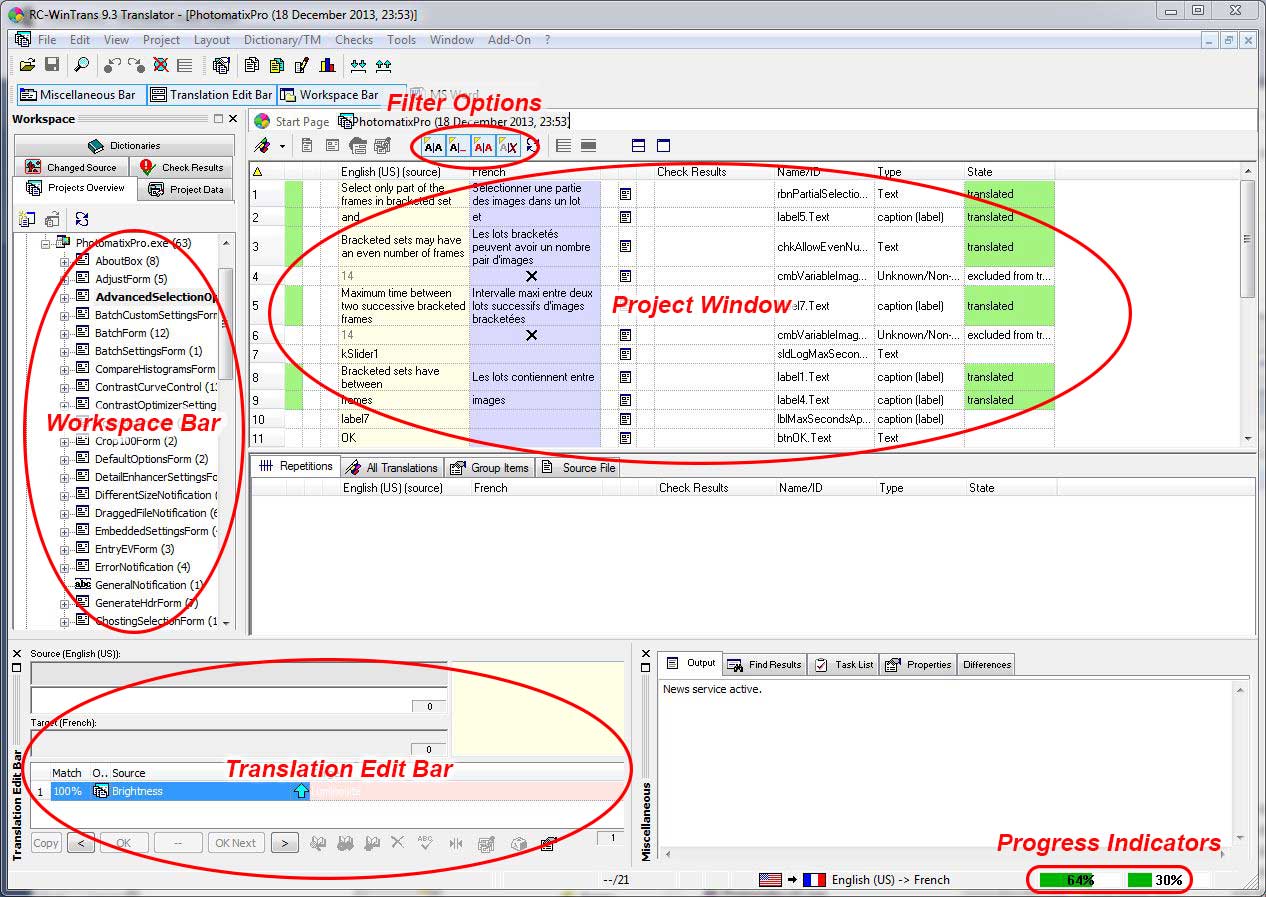You can download a copy of the software here:
When asked, enter the following licence key: RWTTRA-810548-000511
Once you get the list of download choices, select the first one: RC-WinTran 9.3 Translator's Edition
You will be asked again for the licence key when you install.
The translation project is packaged as a zip file containing a single ".fsmdb" file - for example PhotomatixPro-TranslatorProject.fsmdb
Extract this into its own folder. You will also need to copy part of Photomatix into the same folder. The files you need are in a zip file which you can obtain here
Unzip these files and put them in the same folder as the .fsmdb file.
You should now be ready to start up RC-WinTrans.
The first thing you will need to do is to tell it where to find the parts of the Photomatix application that you downloaded. Note that you need to do this only once.
Select Tools -> Options, then click on the ".NET" tab. Click on the "Add..." button, browse to the folder where the .fsmdb file is and click OK, and then OK again to close the Options window.
Now, to open the project, select File -> Open -> Translation Project from the menu, and open the .fsmdb file you extracted earlier.
Shown below are the important parts of RC-WinTrans, which we'll refer to as we go through.

To the left of the screen is the Workspace Bar, which allows you to select the form or control you want to translate. You'll start off with an entry showing the project name - for example "PhotomatixProResX Fr (10 January 2014)". Double-click on this to open the project. You should now see two entries underneath the project name: PhotomatixControls.dll and PhotomatixPro.exe. Double-click on the first one to see all the controls that need translation, and on the other to see all the forms.
Click on a form or control name, and in the Project window you should see the list of translatable items, with the English text and next to it a purple columns with the current translation, if there is one. The "State" column on the far right shows the status of the item:
In the toolbar above the Project window, there are four icons which allow you to filter the items you will see in the list:
Click on them to show or hide items in each category. You'll probably want to hide items excluded from translation.
One way to change the text is just to double-click on the translated text column and edit the text. You can also edit the text in the Translation Edit Bar, and click OK to confirm the change. Use the "<" and ">" buttons to move between untranslated entries.
Notice the "Repetitions" tab below the main translation list in the Project window. If the text to be translated also occurs in some other place (e.g. in some other form or control), this will show all the occurrences of the text (including the one you are editing).
You can use the same translation for all of them by entering the translation for one of them in the Translation Editor Bar, then clicking ok the "OK (n)" button. The text of the button changes depending on how many items this translation will apply to (e.g. OK (2)).
Notice the Progress Indicators in the Status Bar, at the bottom-right of the main Rc-WinTrans window. These give you a visual indication of the percentage of translated (green), non-translated (white) and changed source (red) items. The leftmost indicator shows the status of the currently viewed item (e.g. a form you are translating) whereas the rightmost one shows the statistics for the whole project.
If you need to see where the text occurs in the control or form, or change the size of controls, you will need the Forms Editor.
To use this, click on the name of the control or form you want to edit in the Workspace list, and then right-click on it (you need to do both), and select "Open External .NET Forms Editor". This brings up two copies of the form. You work on the leftmost one which is labelled the Target - the translated form, and the one on the right is the Source - the original English version.In the middle is a properties window similar to what ResXEditor offers, and similarly to this editor, you can click on a control and resize it, or change its text or other properties in the properties window. If you click on a property, you should see the Source and Target values shown below the Properties window.
Click on the "Save" icon (first icon in the toolbar) when done, then close the window.